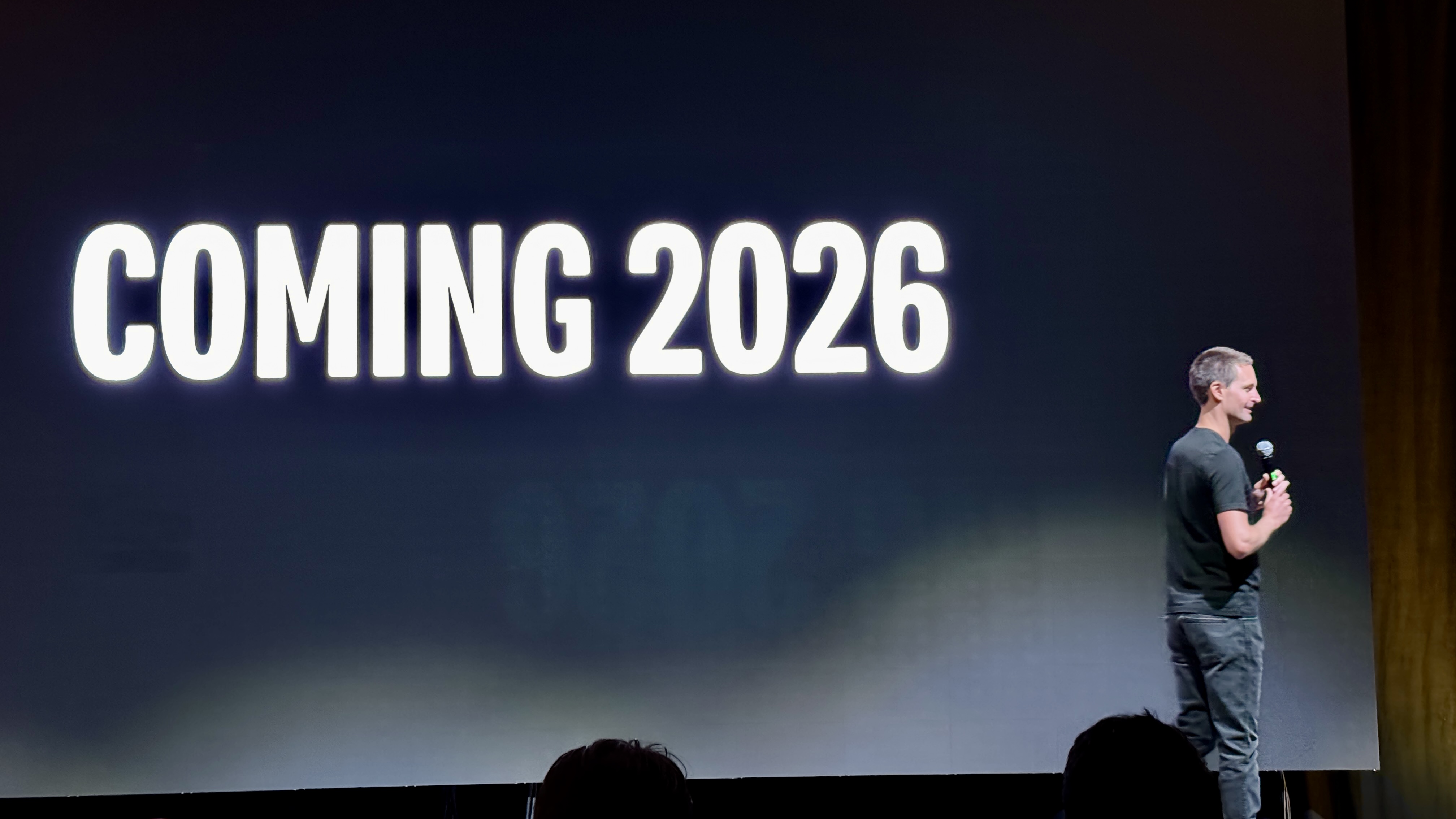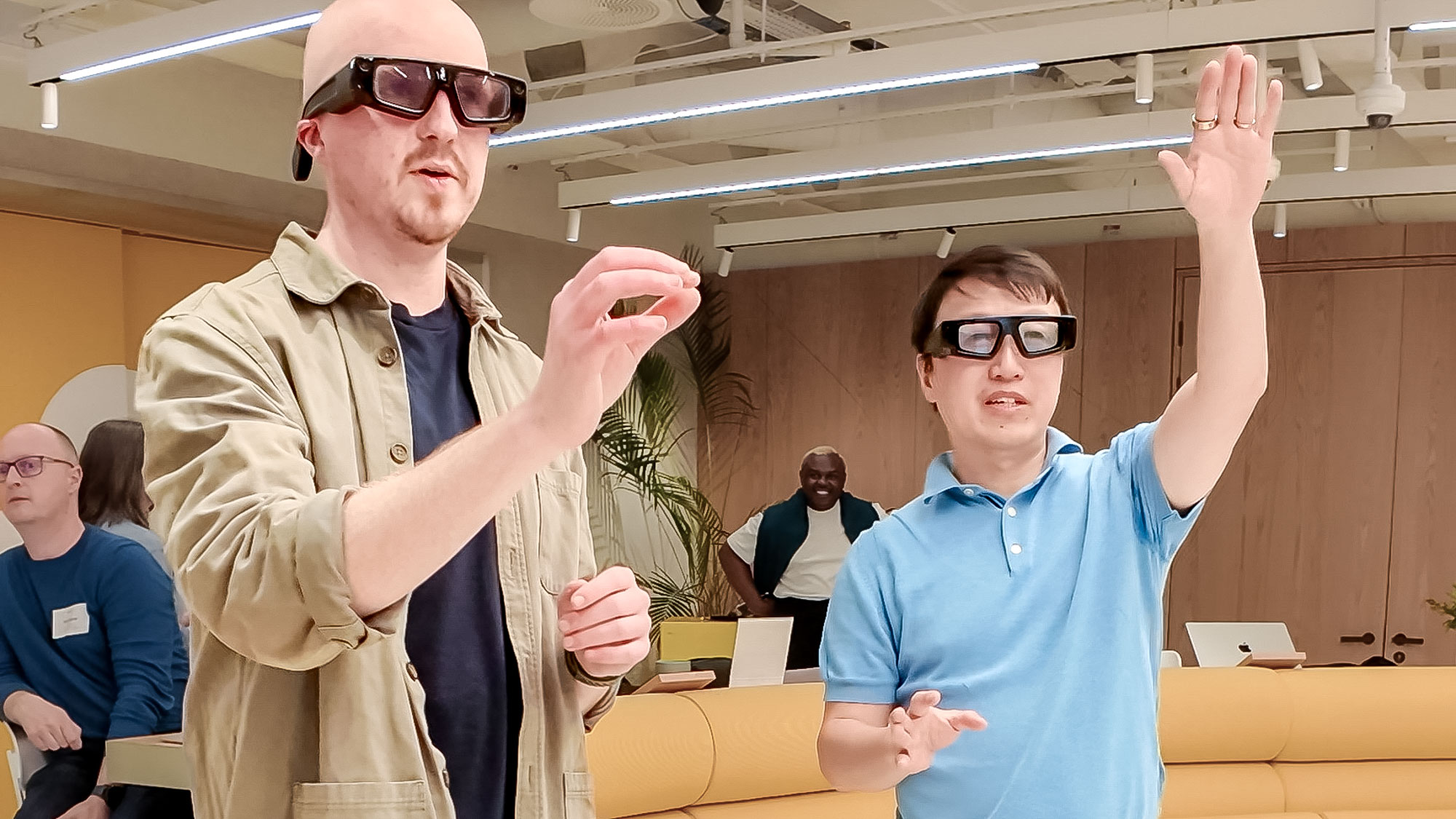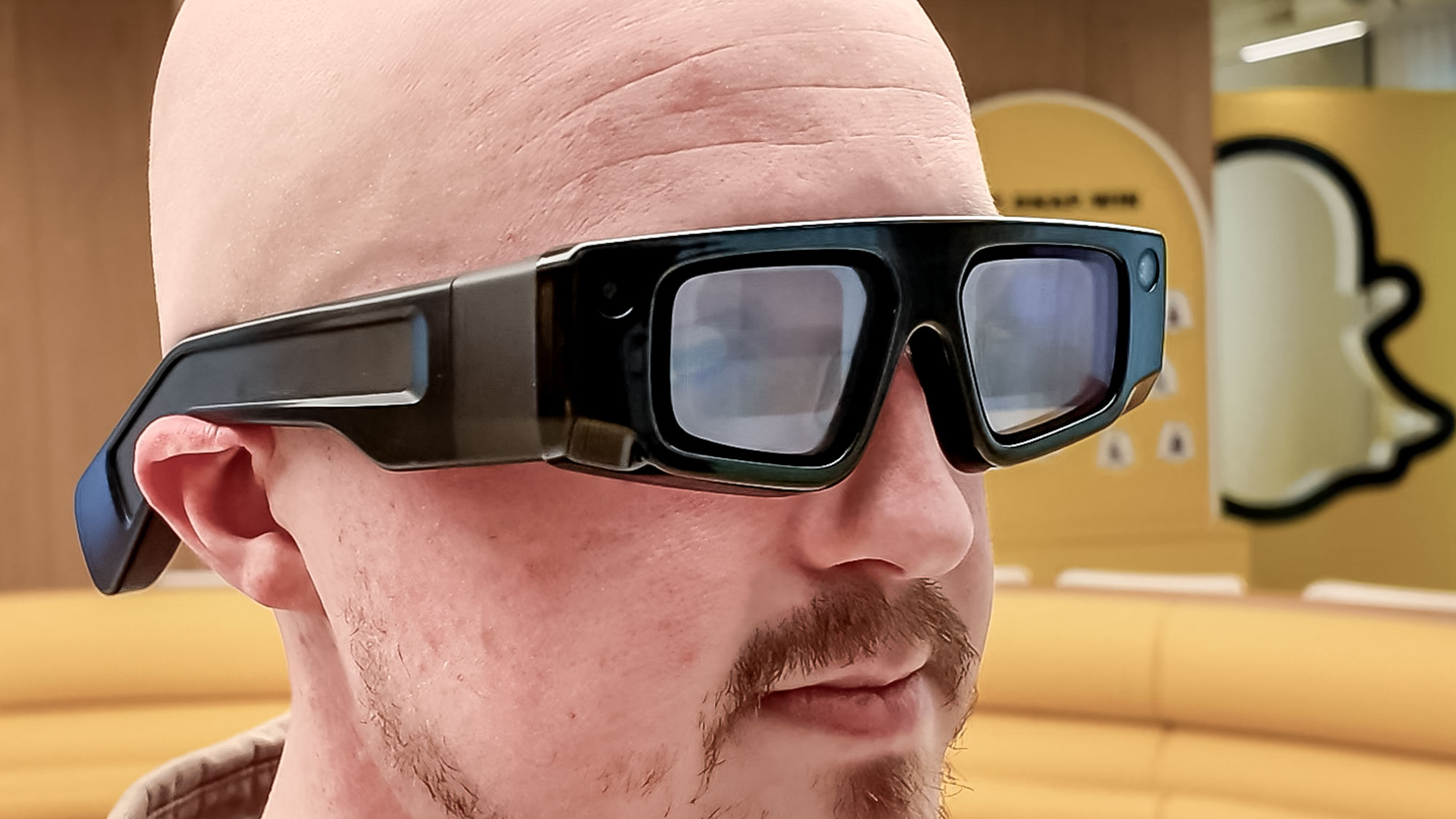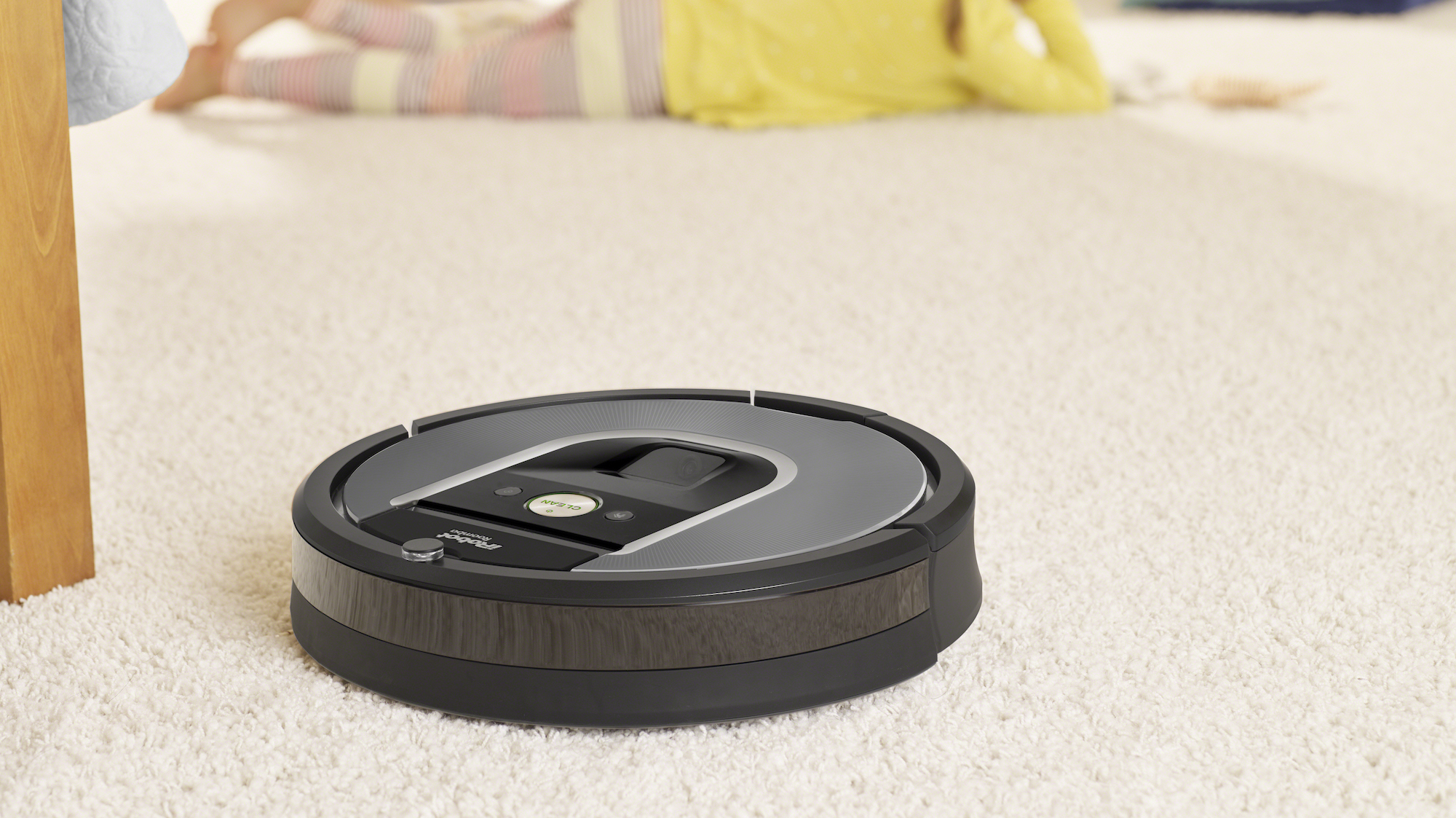I got the inside scoop on Snap Specs from the hardware VP — here's what you need to know about the new smart glasses

So as we found out last week, Snap is finally launching Specs to the public in 2026 — after an exhaustive developer program that spans four years since its first Spectacles AR glasses.
It’s been a helluva journey, and with Meta’s Project Orion on the horizon and Apple being “hellbent” on delivering smart glasses, this is becoming a very competitive space. So far, Snap CEO Evan Spiegel has said they will be smaller, lighter, and fully standalone with “no puck” required.
But there’s a lot we don’t know yet. What has been the story that’s led to this point where Snap is ready to go for a full public release? What tech can we expect inside these future contenders for best smart glasses? What’s the price? And is society ready for true AR glasses like this?
I had a chance to sit down with Snap’s VP of Hardware, Scott Myers, and put these questions to him.
Editor's note: This interview has been edited for brevity and clarity.
Snap Specs are finally coming to the public in 2026. Evan mentioned that they will be smaller, lighter, and much more wearable. My first question is how? After going hands on with them, you can really feel how much tech is inside them. Are they actually going to be small enough as glasses, or will you make more fashionable choices that are big enough to house this tech?
What he said was that it's substantially smaller. We have been in this area for 11 years, and we have been building glasses for a very long time.
It’s public information that we have made some acquisitions that our entire optical engine is our own custom thing. We build it ourselves. We design it ourselves, which gives us a pretty unique position where we know exactly how these things are going. We have road maps for development and I really like where we're going.

And because we're not just a bunch of companies strung together, we're all one group working all toward the same goal. I can have the team designing, say, the waveguide, talking to the same team that's working on the rendering engine and Snap OS. And that synthesis is how we end up still confident about where we're at.
Get instant access to breaking news, the hottest reviews, great deals and helpful tips.
We've been getting feedback in a lot of different forms about the hardware. We've gotten some phenomenal feedback from the community, but also feedback such as “we wish the field of view was bigger,” you know, or that “the device was lighter.”
There’s a joke with the team that this is what I want [points towards his reading glasses]. It's not a question of what I want. It's how we get there. It's the trade-offs we make to go make these the dream of true augmented reality, something people can wear and walk around with. The social acceptability element is so critically important.
Context: Since 2020, Snap has been on a bit of a shopping spree — acquiring AI Factory in 2020 (computer vision AI company), WaveOptics in 2021 (the company designing its waveguide displays), Fit Analytics in 2022 (shopping and ecommerce), a 3D-scanning startup called Th3rd in 2023, and GrAI Matter Labs in 2024 (an edge AI chip company), alongside many more.
You're the first company that's spoken about social acceptability here at Augmented World Expo (AWE). There are numerous projects and things that I saw — all really innovative. But they weren’t thinking about the social faux pas of wearing a big old bit of tech on your face. What challenges do you see in really getting that social acceptability of AR glasses?
Well, I think this is one of the reasons we're standalone. I don't want to see people wearing a wire coming out of the back of their head.
The form factor obviously matters, but it's also the fit and finish of these things that matter when you make that jump. They need to be robust, but all of those are pulling the product in different directions.

I think one of our strengths is the balance of all of these things. You can make a giant field of view. Some companies have, but you also need really high pixel count or pixels per degree, because it's important for text legibility.
You need the ability to make it work indoors and outdoors. Why? Because I don't want to spend all my time inside. As I'm moving through my day, some of that's inside, some of it's outside. It needs to work in both.
So you can't just have static tint sunglasses, nor can you just make them clear because they don't work in both environments. Because we've been building these things for so long, we’ve learned how to solve those problems — what works and what doesn’t — but it’s all in that trade-off and exactly how you balance all those things.
Obviously, I'd want the battery to last for days, but then you end up with this giant battery pack that's directionally incorrect, too.
Snap’s strategy towards bringing Specs to the public has been different to what other companies have done — working with developers directly rather than doing a quicker public release. What was the decision making process to that? And what benefits do you see from going the direction you have for when you do land with Specs in 26?
This has been a multi-year multi-generation arc. We launched a pair of 26-degree field of view, augmented reality glasses in 2021 to developers. With that, we learned a ton, and it drove the way our development tool Lens Studio is constructed.
So we've been just iterating and iterating and iterating. It's an active conversation with the community.

We even iterate in public in collaboration with our Spectacles subreddit. We want to learn. And what we find is as the community grows, as people get better and better at building lenses, they start answering each other's questions. It's a back-and-forth.
That's what a successful community looks like, and we're building this together. And that's very, very intentional. It's in the way our pricing is structured. It's in the way our community is growing. We don’t just sell it to anybody, because we want the people who are really going to move the platform forward.
It's all intentional, and we're very happy with the results. As we've had the product out a little bit longer, the lenses have been getting more engaging and we're learning together how different UI elements are.
We're really here to build this with the community because it’s an entirely new paradigm. There's a lot of things that will take time for people to understand and figure out. It's not just going to be, “oh, here you go, developers — come build for this!” That's not going to work, in my opinion. It is a community-led discussion. And I couldn't be happier with that.
Speaking of price, I guess if we take a look at the range of pricing that you see across VR and AR products, are you seeing maybe Apple Vision Pro-esque pricing, or is Snap going to make Specs more affordable than that?
I think what Evan shared was more than Ray-Ban Metas, and less than a Apple Vision Pro. I recognize that’s a huge scale. Obviously we want to make it as low cost as possible. But, as you pointed out, it's pretty advanced technology.
And so there's a balance there. One of the things that may not be super intuitive is there's a lot of technology that there is not a ton of world capacity for. We have to go off and work with our suppliers to create these new technologies.
Then we have to build the capacity to actually produce them. It’s a fun challenge, but there’s certainly a ton of work to do. This isn't a Snap-specific problem. This is industry-wide.
Another big talking point from Snap is the AI integration with OpenAI and Gemini, alongside how it can fuel spatial intelligence. Currently, vision AI in something like Ray-Ban Meta smart glasses is simple image recognition and small actions. How do you work to make that AI smarter and more personalized to the user based on spatial intelligence?

This is an area where Snap is in a very good spot. Trust matters, privacy matters. And the way we're constructing all of this is a privacy-centric way.
I want to personalize it, as this is the most personal device possible. It is literally seeing exactly what I'm seeing. And so, of course, we're going to bring in all the personalization that AI already has, like memory. That's an element here, but I'm actually more worried about how we do it in a privacy-centric way.
Back to your previous question, I'm very happy with our direction there. And we've shared a little bit about it, but having built these for a while, having lived with them, it's very much one thing to say "hey, what is this?" as a use case. I personally don't think it's that valuable.
It's more about that responsiveness — when I want it, I can go as deep as I want on any topic with it. But do so in a way that maintains my privacy for the times when I don't really need it. But I think that's maybe an undervalued, unexpected problem. You don't want to just share photos of your entire day!
Finally, one of the critical challenges I’ve heard from any company has always been battery life, and exactly how that challenge can be overcome in a way that you can get that all day wearability and all day battery life in like a pair of smart glasses. What is the target for battery life with Snap Specs?
I like that you said battery life, and not just battery capacity. It's all about the way you use it smartly. I worked on smartphones for a very long time. And the battery capacity has grown pretty consistently, but really, software has gotten much better in how it's being used.

This is one of the reasons we built Snap OS, so that we have complete control of how every little bit of energy is consumed across the device. It also goes to the way we design the displays, how we make them super efficient, how we do the processing and how we distribute the heat.
All of these things have to be balanced, and that's why it's so important for our engineers to be in lockstep with the ability to look at everything as precisely as I can.
The other thing I would say is I think if you were to have a full display, including everything in your world all the time, that would probably be visually overwhelming.
I don't personally want a world where I'm walking around and everything's an ad all the time. That would be terrible. So I think it'll be about what is shown and when, how it's used, and then just generally technology progressing.
You know, if you look at some of the initial talk times of very early phones, they weren't that long. I think we have a good strategy to increase the battery life now, and it'll just get better and better over time.
More from Tom's Guide
- Best of AWE 2025: The top 7 XR gadgets that caught our eye
- I let smart glasses read my emotions and watch what I eat — and now I can’t unsee the future
- I just tested a smart ring that can control your AR glasses — and this is what wearables have been missing

Jason brings a decade of tech and gaming journalism experience to his role as a Managing Editor of Computing at Tom's Guide. He has previously written for Laptop Mag, Tom's Hardware, Kotaku, Stuff and BBC Science Focus. In his spare time, you'll find Jason looking for good dogs to pet or thinking about eating pizza if he isn't already.
You must confirm your public display name before commenting
Please logout and then login again, you will then be prompted to enter your display name.
